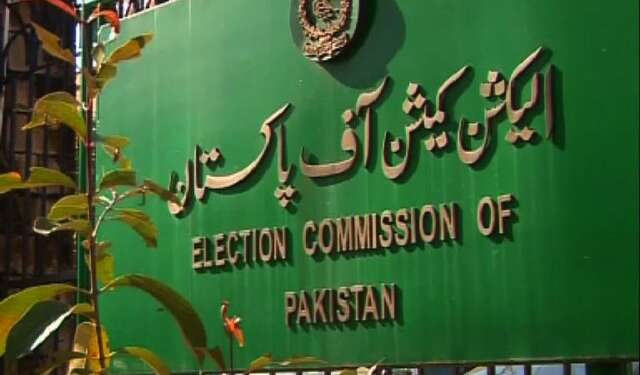A majority of Pakistan’s political parties either lack functioning websites or fail to meet basic legal obligations of transparency and public communication online, according to a detailed assessment by the Free and Fair Election Network (FAFEN).
Out of 166 political parties registered with the Election Commission of Pakistan (ECP), only 58 (35%) had fully or partially functional websites as of April 2025. Of the 20 parties currently represented in the National or Provincial Assemblies, only 14 maintained an official web presence.
The findings raise serious concerns about compliance with the Elections Act, 2017, particularly Section 208(4), which requires political parties to publish updated lists of central office bearers and executive committee members on their websites.
FAFEN found that even among parties with websites, only 40 (69%) shared their central office bearers list, and just six (10%) listed their executive committee members. No party published information about its general council, which is legally required to meet annually under Section 207(2).
“Even parties with large public followings are failing to meet basic transparency obligations,” FAFEN noted. “A functioning website should be a minimum requirement, not a luxury.”
Social media isn’t a substitute
While many political parties are active on social media, FAFEN warns that these platforms are not designed for structured and reliable access to official information.
“The short-lived and algorithm-driven nature of social media feeds makes them less suited for hosting structured and accessible information,” the report states.
“Parties must not treat websites as optional; they are essential tools for democratic engagement.”
Who’s doing it right?
FAFEN evaluated websites based on 30 types of information grouped under six key categories:
- Web Presence and Accessibility
- Party Organization and Governance
- Leadership and Decision-Making
- Financial Transparency
- Electoral Performance
- Contact and Outreach
Jamaat-e-Islami (JI) led the overall rankings by sharing 18 out of 30 data points. Pakistan Tehreek-e-Insaf (PTI) followed with 15, although its website is currently blocked in Pakistan and only accessible via VPN.
Other parties with higher transparency scores included:
- Pakistan Peoples Party Parliamentarians (PPPP) – 12
- Pakistan Muslim League (N) – 11
- Awami National Party (ANP) – 9
- Haq Do Tehreek Balochistan (HDT) – 8
- Muttahida Qaumi Movement-Pakistan (MQM-P) – 8
Among non-parliamentary parties, Pakistan Tehreek Shadbad stood out with a score of 13, outperforming many mainstream parties.
Financial transparency
The biggest gap across nearly all websites was in financial disclosures.
Only one political party uploaded its consolidated statement of accounts, which is mandatory under Section 210(1) of the Elections Act. Just two parties shared donor information for election campaigns or outlined how they collect funds. Only one website published a statement of assets and liabilities of party office bearers.
Not a single party made a public declaration prohibiting foreign donations, as required under Section 204(3).
“Financial transparency was the least disclosed area among the categories reviewed,” FAFEN reported.
Party constitutions and internal governance
Only 22 websites (38%) uploaded digital copies of their party constitutions. But many of these didn’t mention if the documents were up-to-date or if any amendments had been made recently.
Only three websites explained how a party can amend its constitution. Information about how office bearers are elected appeared on just one website, while only four websites mentioned any special wings for women, youth, or people with disabilities.
This lack of detail undermines Sections 203 and 205 of the Elections Act, which require democratic processes and clarity on internal governance, including the suspension or expulsion of members.
Electoral data and candidate selection
Despite an election year, most parties didn’t update their websites with relevant electoral information. Only 7 parties (12%) had uploaded their GE-2024 manifestos, while 32 (55%) still displayed older manifestos.
Only three websites listed party candidates for GE-2024. The same number shared partial or full lists of elected members. And not one political party explained its candidate selection process, a requirement under Section 206.
While 83% of websites listed contact details for at least one office, most provided only the head office address, with no regional or constituency-level contact info. Only 13 websites (22%) provided contact details of central office bearers. Just three websites shared contact details of elected members.
46 websites (79%) linked to their social media accounts, and 23 (40%) posted updates about party events or meetings.
With over 147 million broadband subscribers and nearly 60% internet penetration, Pakistan’s digital space has become a key platform for political engagement. But most political parties are still lagging behind.
“Party websites offer consistent and credible channels for information, far more than social media,” FAFEN emphasized.
“They are essential for reinforcing transparency, public trust, and internal party democracy.”
Yet, most parties in Pakistan remain digitally disconnected, not just from the internet, but from the voters they claim to represent.





